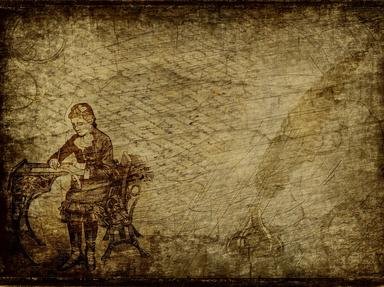Quiz Answer Key and Fun Facts
1. What is the 'floating world' of the novel's title, as described by the narrator, the artist Masuji Ono?
2. The name given to the little wooden bridge which leads to the 'pleasure district' of bars and geisha houses - with its drinking, singing and dancing - reflects the tension in the book between duty and pleasure. What is the bridge called?
3. The Migi-Hidari, a new and large bar in the 'pleasure district', which Masuji Ono played a part in getting official planning approval for, is a symbol in the novel of Japan's 'new spirit' of aggressive imperialism in the 1930s. The enormous illuminated banner outside the bar contains what 'martial' symbolic motif that reflects this?
4. The same scene is used twice in the novel to portray rejection of the value of art, and conflict about what is acceptable art - firstly when Masuji Ono is 15, and later when he has become a celebrated painter. What is that scene?
5. After Japanese defeat in the war, the patriotic musician Yukio Naguchi, who had composed popular marching songs sung by Japanese soldiers, believes his songs were a mistake that contributed to much loss of life, and he makes a dramatic apology. What form does this apology take?
6. Masuji Ono is outraged to learn that the 'Hirayama boy' has been beaten up for singing "old military songs and chanting regressive slogans." Why is Ono so angry about this?
7. One of Masuji Ono's pre-war art pupils, Shintaro, asks him to write a letter explaining that Shintaro had been opposed to painting propaganda posters for a military campaign before the war, and had only done so because Ono insisted. What was the campaign Shintaro claims to have opposed?
8. The formal negotiations for the proposed marriage between Masuji Ono's daughter Noriko and Taro Saito are a thread running through the novel. What traditional aspect of this negotiation process causes Masuji Ono the most concern?
9. What 'rite of passage' event for Masuji Ono's eight-year-old grandson Ichiro, which Ono proposes but which is overruled by his daughters Setsuko and Noriko, symbolises the shift in power from older people to their adult children in post-war Japan?
10. Masuji Ono's reward for supporting the opening of the pro-imperialist Migi-Hidari bar before the war had been to get a table in the bar for Ono and his friends' exclusively to sit at. At the end of the story in 1950, with the bar demolished, what new structure on the same spot ironically echoes this?
Source: Author
dsimpy
This quiz was reviewed by FunTrivia editor
agony before going online.
Any errors found in FunTrivia content are routinely corrected through our feedback system.
